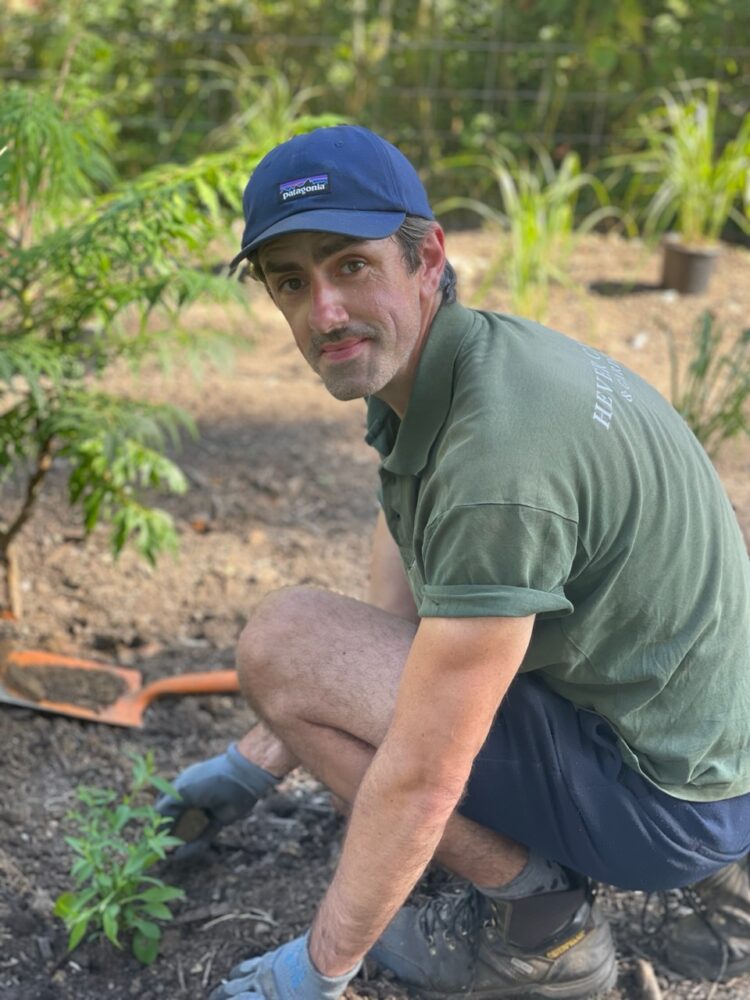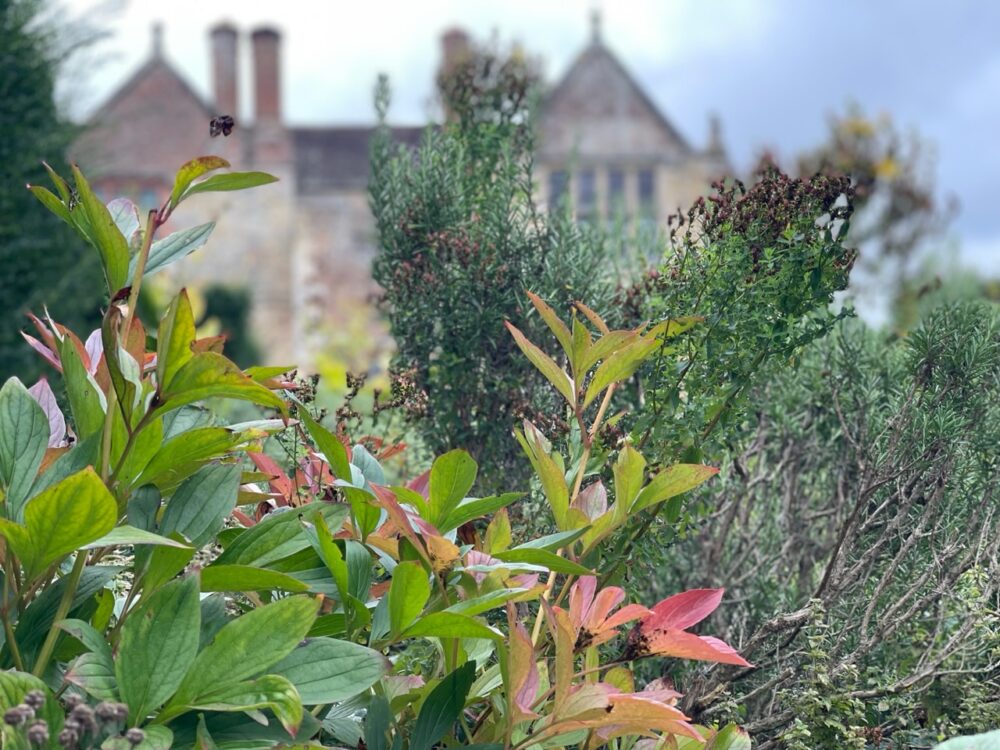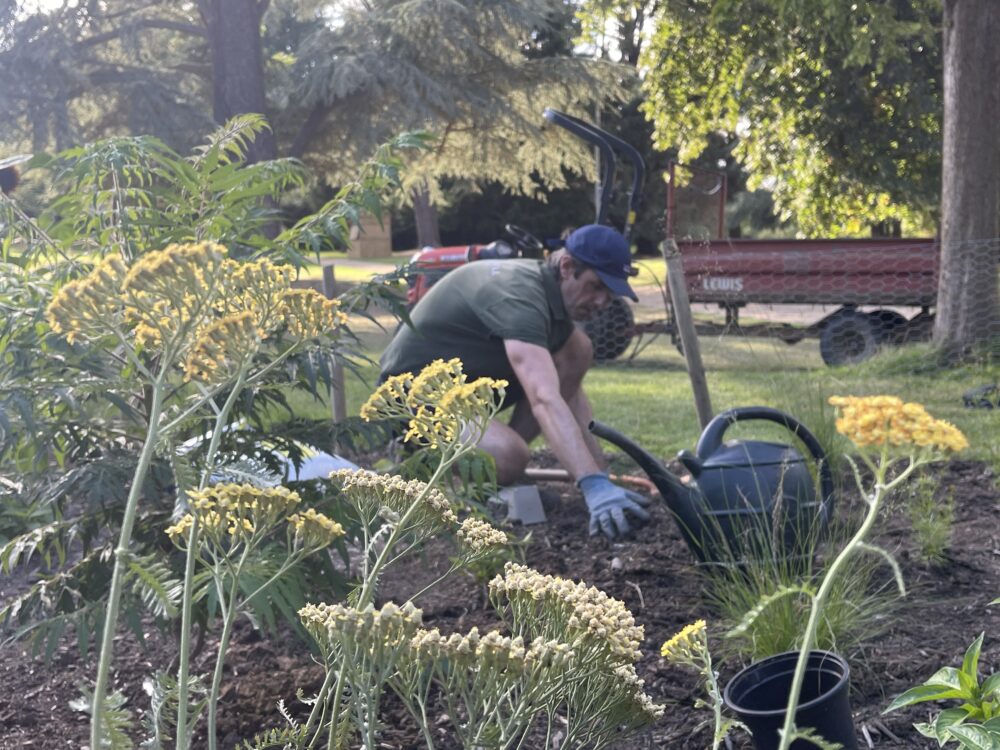Autumn is here, and we are excited to encourage visitors to include even more colour in their lives by revealing the secrets behind our dye garden at Hever Castle & Gardens.
Twelve months ago, the trend for dye gardens began to grow and Felix Green, one of my gardeners, asked me if he could create one at Hever. I jumped at the chance to support him in his new endeavour.
Before joining my team, Felix worked as a fashion designer, in an industry he says isn’t very environmentally friendly. Felix came to work with us during Covid and began to research how natural dyes can be taken from the plants around us and how we can create our own mordants (fixers) naturally too.
Felix is keen to share his knowledge of natural dyes from the garden with visitors this autumn as part of Autumn Colour at Hever Castle & Gardens and he will reveal the plants we’ve been growing there during a special Dye Garden Workshop.

Woad, madder and saffron have been used for centuries to dye cloth, as has goldenrod, cornflower, foxglove, marigold and the aptly named Dyer’s Camomile, but lesser-known plants like dahlias and flag iris can also be used to create green and yellow dyes. And it’s not just flowers: the bark, leaves and twigs of the apple tree produce a beautiful salmon brown colour that can be used to dye wool too.
As most people who love Hever know, the castle was the childhood home of Anne Boleyn, but it was also Anne of Cleve’s house, and Elizabeth I visited regularly too. With these great ladies orbiting the halls, it was probably a centre for Tudor fashion!
The Tudors would have grown dye gardens and used vegetable dyes like madder for red, woad for blue and walnut for brown. Some dyes were more expensive than others and the lower classes often wore brown, yellow or blue because those dyes were easier to source. The upper classes were drawn to bright reds, purple, indigo and black (very difficult to create in Tudor times) to showcase their wealth and exclusivity.
While the Dye Garden is in its infancy for 2023, it should look stunning next year. We hope our visitors will be keen to learn more about how natural dyes were used in the past and how we are using them today.

If you’d like to plan a dye garden, then the following plants are a good start:
- Coreopsis (tickseed) – for dying yellows and oranges, this flowers mid to late July.
- Rhubarb – using just the root of the plant, rhubarb produces a yellowy colour and additional processes can be added by mixing with acid or alkaline solution to get a whole range of colours. Mixing vinegar with water will change the colour. Even the PH level in your water will change/affect the final colour.
- Rubia tinctorum (madder) – this takes three years before you can use it, but once matured it will provide a red dye.
- Indigofera tinctoria (indigo) – an annual, this plant produces a fantastic blue that can be modified to vary from pale to deep. Indigo is one of the only dyes you can keep re-dipping to achieve a darker shade.
- Achillea (yarrow) – use the leaf to produce a good colourfast yellow. If you add iron it will give an olive green shade.
- Solidago (golden rod) – this creates a beautiful yellow natural dye. If you want a brighter or more intense shade you can add soda ash.
There’s something for everyone at Hever Castle & Gardens this autumn, with winter container colour demonstrations and self-guided autumn tours around Lake Walk, while our younger visitors can also learn tree facts as they find them dotted through the grounds.
The self-guided autumn tour and tree-facts information is available from the information hut from 1 October – 31 October.
Find all Neil’s columns here.






